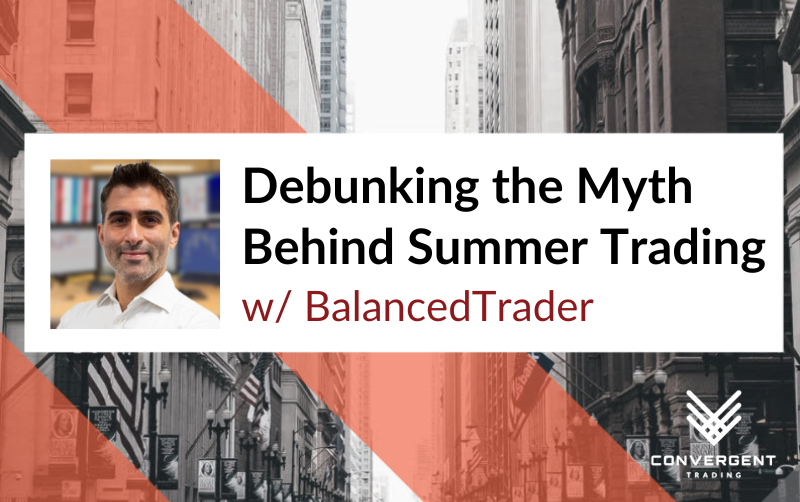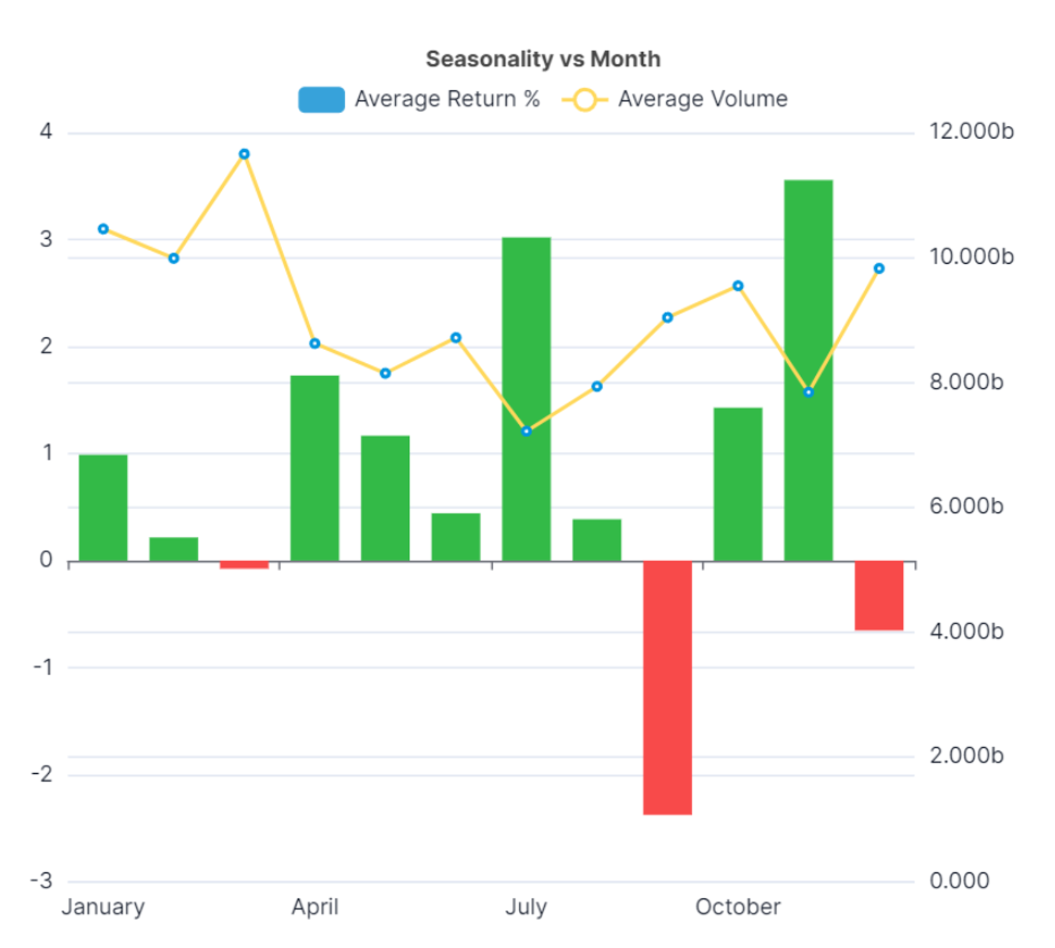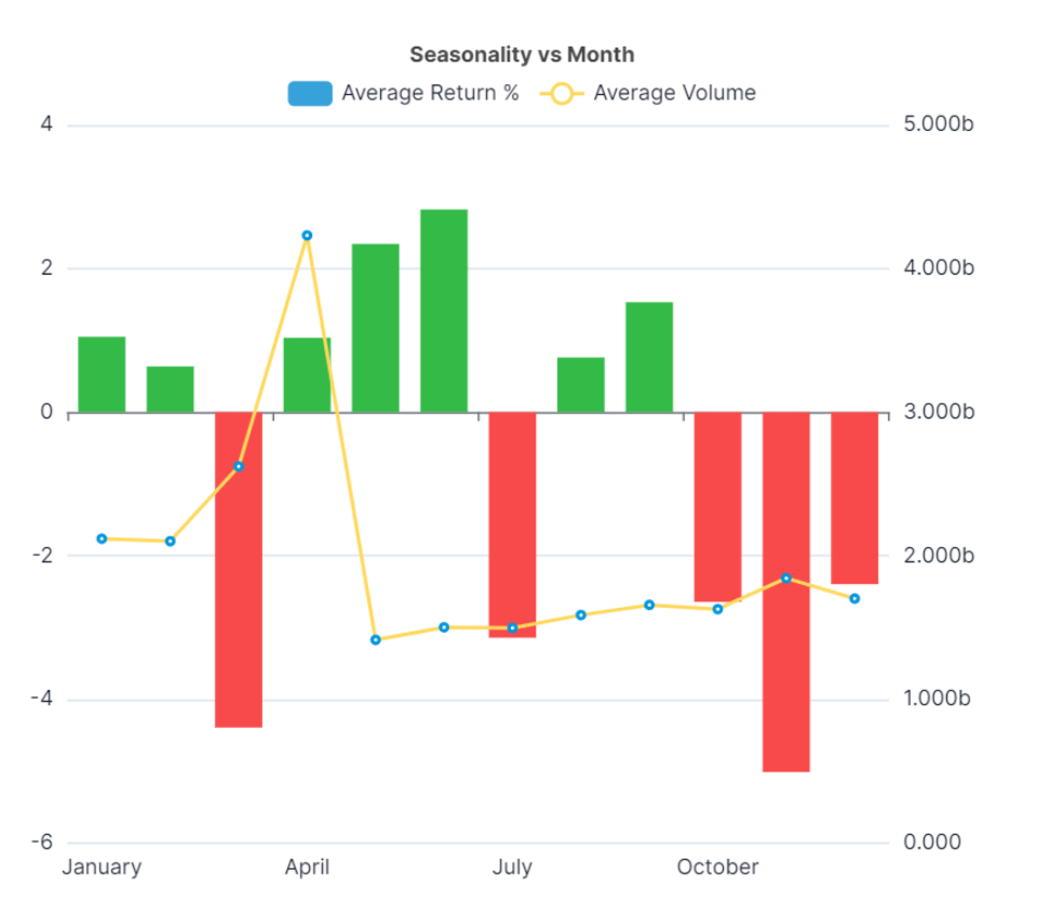Debunking the Myth Behind Summer Trading w/BalancedTrader
As the old adage goes, “sell in May and go away”
Summer and the Christmas holiday season are typically considered the quietest trading periods. Institutional investors often take vacations during these times, leading to decreased market liquidity.
Lower trading volumes may cause volatility to either increase or decrease, potentially leading to less predictable price behavior.
However, this is just the theoretical perspective, and reality often differs. Do market volatility and liquidity truly fluctuate during the summer? Do different market instruments exhibit cyclical seasonal patterns? Should we alter our trading behavior accordingly?
Let’s have a look at the 10 year Monthly returns on the SPY
The 10 year SPY seasonality chart (Figure 1) reveals that the price has steadily increased, regardless of the season, with the most significant gains in July and November. Fluctuations occurred in September, December, and March without any discernible seasonal pattern. Price responded more to fundamental factors than to the seasons.
Traded liquidity typically peaks early in the year, drops during the summer months, and then picks up again in the final quarter. This pattern impacts the execution of trading strategies and should be considered when deciding how to trade effectively.
Let’s have a look at the 10 year Monthly returns on USO crude prices
Seasonal factors may still influence commodities. For instance, large agricultural seasonal anomalies such as drought or heavy rain can affect crop cycles, and driving season and harsh winters can increase demand for crude and heating oil, respectively.
More insights might be drawn from the 10 year USO seasonality chart (Figure 2), which shows prices tend to fall in the second half of the year and rise in the first half.
Traded liquidity also peaks early in the year, drops during the summer, but then remains relatively stable for the remainder of the year.
How to approach lower liquidity environments in the summer
It’s important to maintain faith in yourself and your abilities. Remember to stay vigilant and aware, as major market moving events can occur in any season. Generally speaking, the market operates independently of the seasons, and we should not get carried away with the notion that summer trading is an entity entirely separate from the trading seasons of the rest of the year. The market operates in cycles, and as such, the trading environment naturally varies from one season to the next. What affects day traders most is the liquidity and participation by larger time frame traders.
Another key point is to master the skill of evaluating the impact of various fundamental factors during specific trading periods. It’s essential to keep in mind that while these factors can vary in strength, the seasonal factor typically doesn’t play a significant role.
Changes in liquidity can amplify or suppress opportunity as unexpected market moving events are looking to reprice in lower liquidity, and this can have greater effect on asset prices. This can be an opportunity for outsized gains or losses, but with patience and paying attention to developing news and themes, it can provide outstanding returns.
“Changes in liquidity can amplify or suppress opportunity as unexpected market moving events are looking to reprice in lower liquidity, and this can have greater effect on asset prices.“
– BalancedTrader
Learning how to leverage these patterns to your advantage is a separate skill in itself. The main variable we need to adjust for is liquidity and fewer opportunities.
Here are some tips for trading lower liquidity
- Evaluate the impact of seasonality on market volatility and liquidity.
- Compare trading patterns between summer and other seasons to identify any significant deviations.
- Analyze historical market data for any seasonal trends in asset prices.
- Develop trading strategies that consider potential seasonal fluctuations in the market liquidity.
- Understand the behavior of different market instruments during summer and how to leverage them.
- Explore how holiday periods like Christmas influence trading dynamics.
- Investigate the impact of reduced institutional investor presence during summer.
- Assess the role of retail investors in market activity during summer.
- Compare the predictability of price behavior during summer versus other seasons.
- Assess the benefits and risks of trading in markets with lower liquidity and higher volatility.
Conclusion
Summer is time for vacations, sea, and sunbathing – anything but work. In the summer, people want to travel, enjoy different types of leisure activities, forget about work and emotionally exhausting trading, and spend time with family and friends at least for a little while. If you have to trade making some adjustments and focusing on where large, outsized moves and what factors drive them can be advantageous.
During summer, there are lower trading volumes and reduced impact of institutional capital. Large market makers also take breaks, banks and investment funds let their employees go on holidays, private traders with large capital also prefer to go on vacation. This may result in increased volatility as a decrease in volumes means a decrease in liquidity. A buyer wants to buy an asset, but there are no sellers and vice versa. Lastly, the market experiences a higher impact from unexpected news and related adjustments.
BalancedTrader
CT Maven



